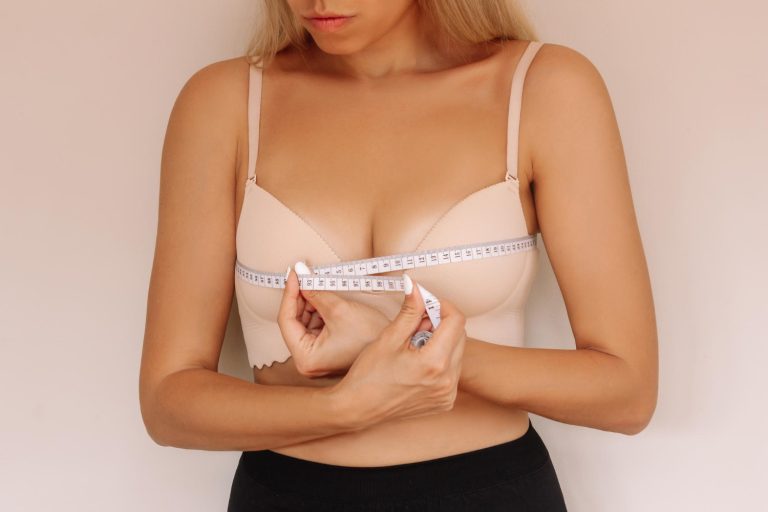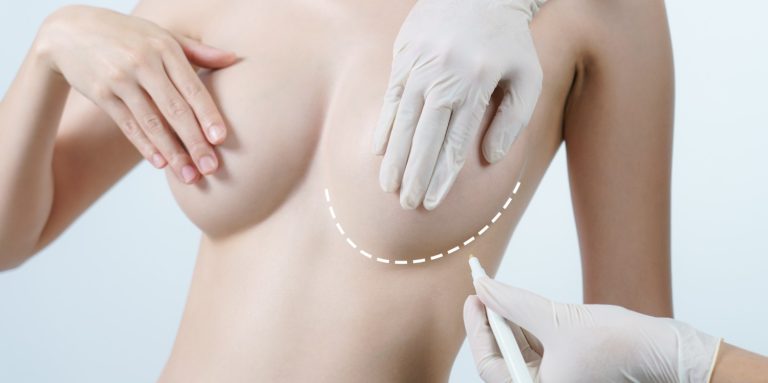Pregnancy and breastfeeding can bring amazing changes—but they can also leave you with some unexpected concerns about your breasts and nipples. From sagging and stretch marks to changes in size, shape, or sensitivity, it’s completely normal to wonder how to fix breast and nipple concerns after pregnancy.
The good news? You have options. In this article, we’ll cover the most common post-pregnancy changes, what’s temporary vs. lasting, and both natural remedies and medical treatments that can help you feel more confident and comfortable in your body again.
Understanding Breast and Nipple Changes After Pregnancy
Common Breast Changes Postpartum
After pregnancy, many women notice significant changes in their breasts. These changes are primarily due to hormonal fluctuations and the physical demands of breastfeeding. Breasts may become larger, softer, or even saggy as they adjust to the new post-pregnancy state.
The skin may also stretch, leading to the appearance of stretch marks. Understanding these changes is crucial for addressing any concerns effectively.
Book A Consultation With Dr Tarek Bayazid
Top-rated Plastic Surgeon For Breast Augmentation in Dubai
Installment Plan Available
- Breasts may increase in size during pregnancy and breastfeeding.
- Post-breastfeeding, breasts might appear less firm.
- Stretch marks can develop due to skin stretching.
Nipple Alterations Following Childbirth
Nipples can undergo various changes after childbirth, often becoming more sensitive or changing in color and size. These alterations are a natural part of the body’s adaptation to breastfeeding. Some women may experience inverted nipples or changes in the areola’s texture and appearance.
- Nipples may become more sensitive.
- Changes in nipple color and size are common.
- Inverted nipples can occur postpartum.
Hormonal Influences on Breast Tissue
Hormones play a significant role in the changes observed in breast tissue after pregnancy. Estrogen and progesterone levels fluctuate, impacting breast size and elasticity. These hormonal shifts are essential for milk production but can also lead to discomfort or changes in breast appearance.
- Estrogen and progesterone levels affect breast tissue.
- Hormonal changes are necessary for milk production.
- Fluctuations can lead to discomfort or changes in appearance.
Addressing Breastfeeding-Related Concerns
Preventing and Treating Mastitis
Mastitis is a common concern for breastfeeding mothers, characterized by breast inflammation and infection. It can cause pain, swelling, and redness. To prevent mastitis, ensure proper breastfeeding techniques and maintain good hygiene. If mastitis occurs, antibiotics and warm compresses can help alleviate symptoms.
- Practice proper breastfeeding techniques.
- Maintain good breast hygiene.
- Use antibiotics and warm compresses for treatment.
Managing Sore and Cracked Nipples
Sore and cracked nipples are frequent issues for new mothers. These problems can result from improper latching or dry skin. To manage this, apply lanolin-based creams and ensure the baby latches correctly. Keeping nipples moisturized can also prevent cracking.
- Ensure proper latching during breastfeeding.
- Apply lanolin-based creams for relief.
- Keep nipples moisturized to prevent cracking.
Dealing with Clogged Milk Ducts
Clogged milk ducts can cause discomfort and lead to mastitis if not addressed. Regular breastfeeding and massaging the affected area can help clear the blockage. Warm compresses before feeding can also aid in unclogging the ducts.
- Breastfeed regularly to prevent blockages.
- Massage the affected area to clear ducts.
- Use warm compresses before feeding.
Non-Surgical Solutions for Breast and Nipple Issues
Proper Bra Support and Fitting
Wearing a well-fitted bra is essential for postpartum breast health. A supportive bra can alleviate discomfort and prevent sagging. It’s crucial to get professionally fitted, as breast size can change significantly after pregnancy.
- Choose a supportive, well-fitted bra.
- Get professionally fitted for accurate sizing.
- A good bra can prevent sagging and discomfort.
Skincare Routines for Breast and Nipple Health
Maintaining a skincare routine for your breasts and nipples can improve their health and appearance. Use gentle cleansers and moisturizers to keep the skin hydrated. Regular exfoliation can also help remove dead skin cells and promote skin renewal.
- Use gentle cleansers and moisturizers.
- Regularly exfoliate to promote skin renewal.
- Keep the skin hydrated for better health.
Exercises to Improve Breast Appearance
Certain exercises can enhance breast appearance by strengthening the underlying muscles. Focus on chest exercises like push-ups and chest presses to improve firmness and lift. Consistent exercise can lead to noticeable improvements over time.
- Perform chest exercises like push-ups.
- Include chest presses in your routine.
- Consistent exercise improves firmness and lift.
Medical Treatments for Postpartum Breast Concerns
Topical Medications for Nipple Problems
Topical medications can effectively address nipple issues such as soreness and cracking. These medications often contain soothing ingredients like lanolin or hydrocortisone. Consult a healthcare provider to choose the right product for your needs.
- Use topical medications for sore nipples.
- Look for products with lanolin or hydrocortisone.
- Consult a healthcare provider for recommendations.
Radiofrequency Microneedling for Skin Tightening
Radiofrequency microneedling is a non-invasive treatment that can tighten loose skin on the breasts. This procedure stimulates collagen production, improving skin elasticity and firmness. It’s a popular choice for those seeking non-surgical solutions.
- Radiofrequency microneedling tightens loose skin.
- Stimulates collagen production for better elasticity.
- Non-invasive and effective for skin tightening.
Laser Therapy for Stretch Marks
Laser therapy is an effective method for reducing the appearance of stretch marks on the breasts. This treatment targets the affected area, promoting skin regeneration and reducing discoloration. Multiple sessions may be required for optimal results.
- Laser therapy reduces stretch marks.
- Promotes skin regeneration and reduces discoloration.
- Multiple sessions may be needed for best results.
Surgical Options to Restore Breast Appearance
Breast Augmentation with Implants
Breast augmentation with implants is a surgical option for restoring breast volume and shape. This procedure involves inserting silicone or saline implants to achieve the desired size and contour. It’s a popular choice for women seeking significant changes.
- Implants restore breast volume and shape.
- Silicone or saline options are available.
- Popular for achieving significant changes.
Natural Breast Augmentation via Fat Transfer
Natural breast augmentation involves transferring fat from other body areas to the breasts. This procedure offers a more natural look and feel compared to implants. It’s ideal for those seeking subtle enhancements without foreign materials.
- Fat transfer offers a natural look and feel.
- Uses fat from other body areas for augmentation.
- Ideal for subtle enhancements.
Breast Lift (Mastopexy) Procedures
A breast lift, or mastopexy, is a surgical procedure that raises and reshapes sagging breasts. This surgery removes excess skin and tightens the surrounding tissue for a more youthful appearance. It’s suitable for women experiencing significant sagging.
- Raises and reshapes sagging breasts.
- Removes excess skin and tightens tissue.
- Suitable for significant sagging issues.
Nipple-Specific Treatments and Procedures
Nipple Reduction Surgery
Nipple reduction surgery is an option for women with overly large or protruding nipples. This procedure reduces nipple size and improves symmetry. It’s a straightforward surgery with minimal recovery time.
- Reduces size of large or protruding nipples.
- Improves nipple symmetry.
- Minimal recovery time required.
Inverted Nipple Correction
Inverted nipple correction is a procedure that addresses nipples that retract inward. This surgery releases the tissue causing inversion, allowing the nipple to protrude naturally. It’s a simple procedure with lasting results.
- Corrects inverted nipples for natural protrusion.
- Releases tissue causing inversion.
- Simple procedure with lasting results.
Areola Reshaping Techniques
Areola reshaping techniques can adjust the size and shape of the areola for aesthetic purposes. These procedures can reduce areola size or improve symmetry, enhancing overall breast appearance. Consultation with a specialist is recommended for best results.
- Adjusts size and shape of the areola.
- Enhances breast appearance and symmetry.
- Specialist consultation recommended.
Maintaining Long-Term Breast Health
Regular Self-Examinations
Regular self-examinations are crucial for maintaining breast health. These exams help detect any unusual changes or lumps early, allowing for prompt medical attention. Make it a habit to perform self-exams monthly.
- Perform regular self-examinations.
- Detect unusual changes or lumps early.
- Conduct exams monthly for best results.
Importance of Mammograms
Mammograms are an essential tool for early detection of breast cancer. Regular screenings can identify issues before they become serious, improving treatment outcomes. Follow your healthcare provider’s recommendations for mammogram frequency.
- Mammograms detect breast cancer early.
- Regular screenings improve treatment outcomes.
- Follow the healthcare provider’s recommendations.
Lifestyle Factors for Breast Wellness
Lifestyle choices play a significant role in breast wellness. Maintain a healthy diet, exercise regularly, and avoid smoking to support breast health. These habits can reduce the risk of breast-related issues and promote overall well-being.
- Maintain a healthy diet and exercise regularly.
- Avoid smoking for better breast health.
- Reduce the risk of breast-related issues.
Final Thoughts
Addressing breast and nipple concerns after pregnancy involves understanding the changes your body undergoes and exploring various solutions. From non-surgical options to medical treatments and surgical procedures, there are numerous ways to restore and maintain breast health. Consulting with healthcare professionals and making informed decisions can lead to satisfying results and improved confidence.
FAQs
How long does it take for breasts to return to normal after pregnancy?
Breasts typically take several months to return to their pre-pregnancy state after childbirth. The timeline can vary depending on factors like breastfeeding duration and individual body changes. Patience and proper care can aid in the transition.
Can sagging breasts be fixed naturally after pregnancy?
Yes, sagging breasts can be improved naturally through exercises and proper support. Strengthening chest muscles and wearing a supportive bra can enhance breast appearance. However, significant sagging may require medical intervention for optimal results.
What is the best treatment for nipple concerns after breastfeeding?
The best treatment for nipple concerns post-breastfeeding depends on the specific issue. Topical creams can address soreness, while surgical options may be needed for structural changes. Consulting a healthcare provider can help determine the most suitable approach.







